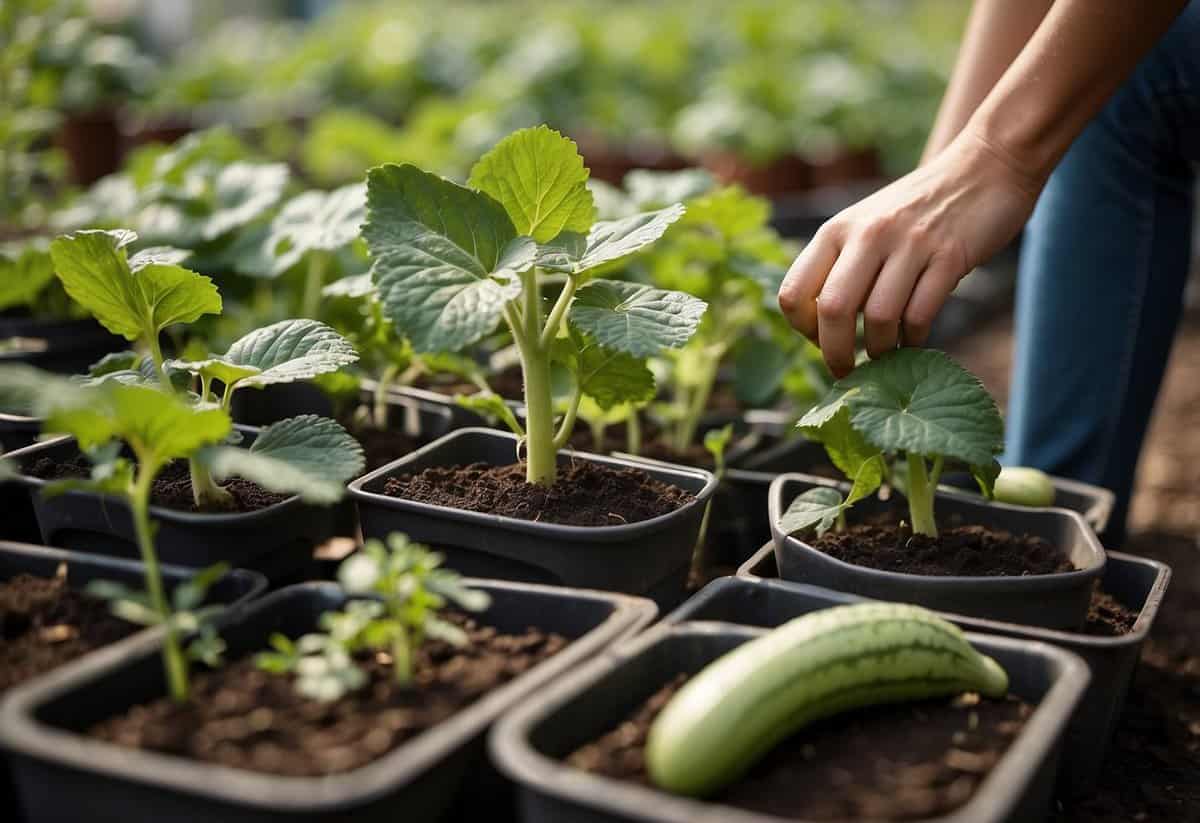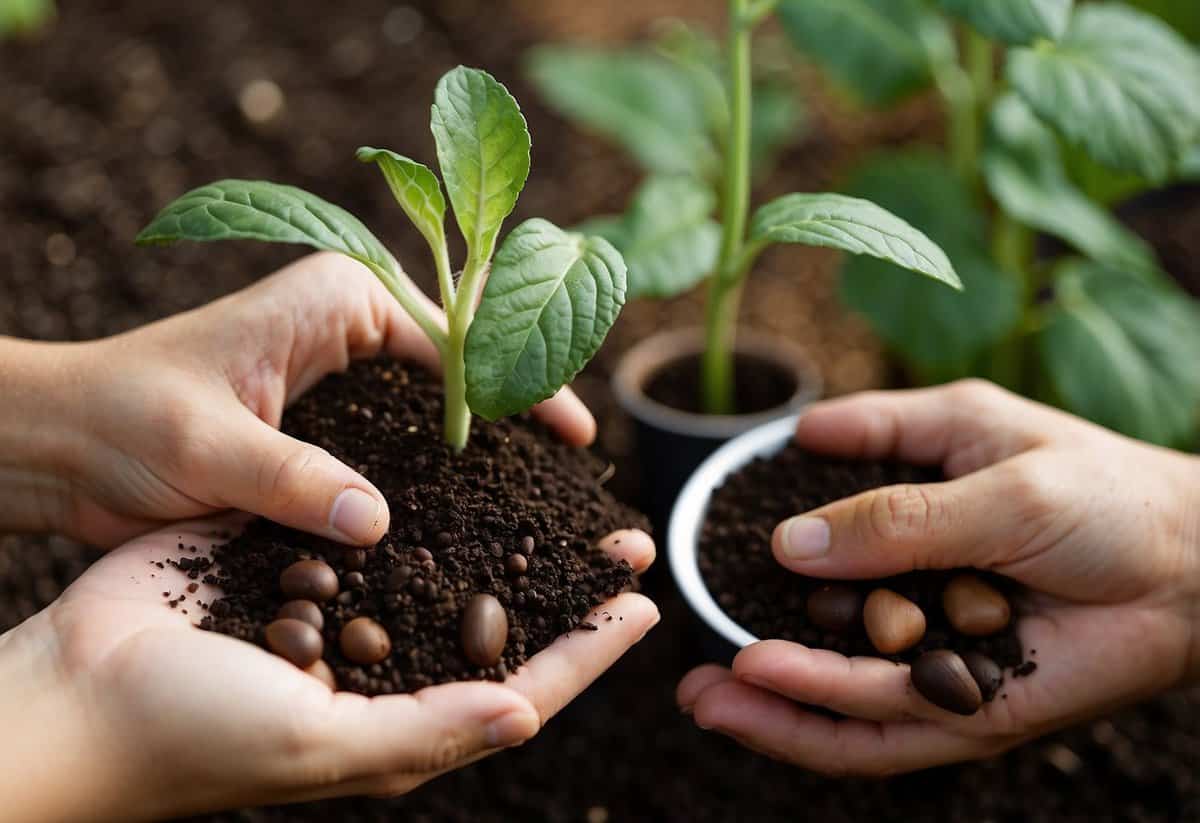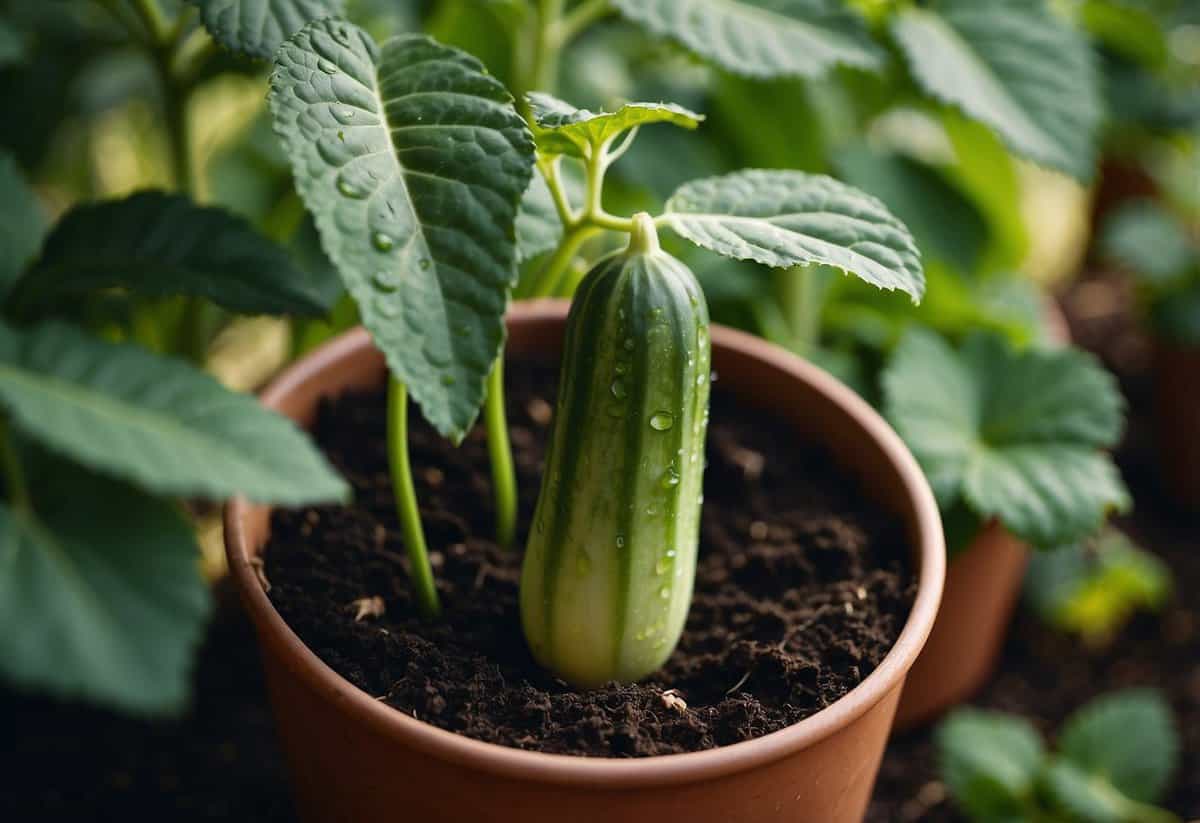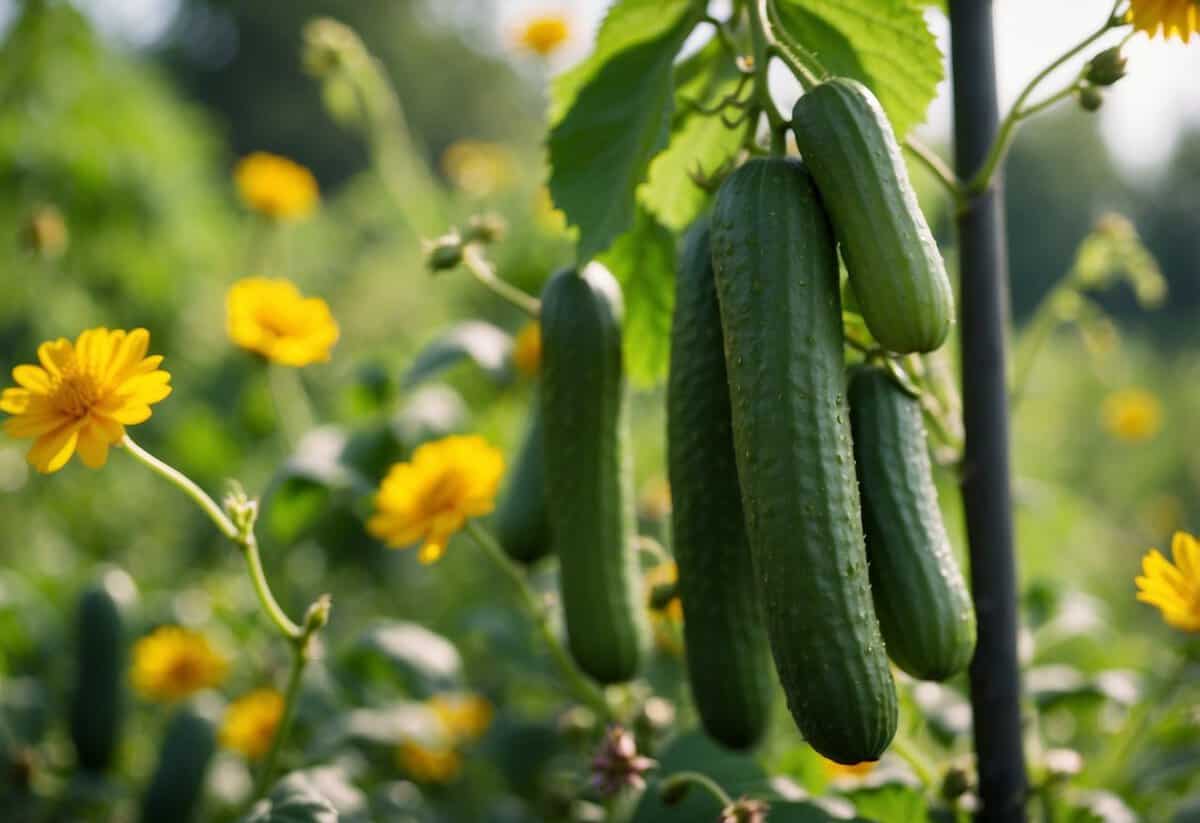Do Cucumbers Like Pots or Ground? Discover the Best Growing Method!
Have you ever wondered if cucumbers prefer growing in pots or directly in the ground? Whether you have a spacious garden or just a small patio, you can still enjoy fresh cucumbers. Cucumbers thrive both in pots and in the ground, but each method has its own advantages.

If space is limited, growing cucumbers in pots can be a perfect solution. Containers offer flexibility and can be moved to chase the sun or protect from harsh weather. On the other hand, planting cucumbers in the ground allows their roots to spread out more, which may lead to larger yields.
No matter which option you choose, you’ll find cucumbers can adapt well. Ready to dig deeper and find out how to make the most of your cucumber plants? Let’s explore what works best for you!
Choosing the Right Environment for Cucumbers

When growing cucumbers, you must decide whether they will thrive better in pots or directly in the ground. Additionally, understanding the soil needs and the impact of temperature and weather on your plants is crucial.
Pot vs. Ground Planting
Cucumbers can grow well in both pots and the ground, but each has its own advantages. If you choose to grow cucumbers in containers, pick pots that are at least 12-16 inches deep to support their root system. Growing in pots allows you to move the plants to chase sunlight or avoid inclement weather.
When planting in the ground, cucumbers have more space, which can lead to bigger yields. Plant them about 6 inches apart and keep the rows about a foot apart. In-ground planting also means you are less likely to need frequent watering since soil retains moisture better than pots. Both methods require consistent watering, but containers may need more frequent checks to keep the soil from drying out.
Understanding Soil Needs
The type and quality of soil you use greatly affect the growth of your cucumbers. Cucumbers prefer well-drained and loose soil. Adding compost or organic matter can improve soil structure and provide essential nutrients.
Before planting, ensure your soil temperature is at least 60°F (15°C) for optimal seed germination. If you’re planting in the ground, loosen the soil to allow roots to penetrate easily. For pots, use a high-quality potting mix that retains moisture but drains well to prevent waterlogging. Maintaining consistent moisture is key, but be careful not to overwater as it can lead to root rot.
The Impact of Temperature and Weather
Cucumbers are warm-weather plants and thrive in temperatures between 60°F and 90°F. They need at least eight hours of direct sunlight each day. Plant your cucumbers after the last frost date in your area to prevent cold damage. Frost can kill young seedlings, so timing is crucial.
You can use row covers to protect your plants from unexpected chilly weather early in the growing season. High humidity levels can also promote diseases, so proper spacing and ventilation are important. During hot weather, keeping the soil moist and mulching can help preserve moisture and keep the roots cool.
Choosing the right environment for cucumbers involves careful planning and monitoring to ensure they have the best conditions to thrive.
Selecting the Best Cucumber Varieties

Choosing the right cucumber variety depends on your gardening space and needs. Bush and vining types each offer unique benefits, while specialized varieties thrive in pots.
Bush and Vining Types
Bush cucumbers are perfect for small spaces and container gardening. These compact plants don’t sprawl like vining cucumbers. They usually grow to about 24-36 inches in height. The Salad Bush is a popular choice, known for its small, sweet cucumbers and easy maintenance. It grows up to 24 inches and produces lots of fruit.
Vining cucumbers, on the other hand, need more space but often yield larger crops. These cucumbers grow on long vines that can reach several feet in length. Burpless #26 is a great example of a vining type. It can grow up to 12 inches long but is best picked at 8-10 inches. This variety is known for its mild flavor and disease resistance.
Specialized Varieties for Pots
When growing cucumbers in pots, selecting the right variety is key. Bush varieties are usually better suited for containers because of their compact size. The Salad Bush cucumber, mentioned earlier, is ideal for this. It’s small but productive, making it perfect for container gardening.
For those who prefer vining cucumbers but still want to use pots, consider a variety like Marketmore. This type is known for its adaptability. Although it grows on vines, it does well when trellised in a pot.
Make sure your chosen pot can accommodate the plant’s growth. Use a wide container to ensure good root development and provide enough support with stakes or a small trellis for vining types.
Consider sun exposure and watering needs, as cucumbers require plenty of both to thrive. Ensure you select varieties that match your gardening space and goals for the best success.
Preparing to Plant

Getting ready to plant cucumbers involves choosing the best method for sowing seeds, selecting the right containers, and knowing when to transplant young plants. These steps are crucial for healthy growth.
Starting from Seeds
Begin by sowing cucumber seeds indoors about three weeks before you plan to transplant them outside. Use small pots and plant two seeds in each, about an inch deep. Make sure to water them well. For better germination, maintain a temperature of around 70ºF (21ºC). You can achieve this by using a heating pad or placing the seed pots on a warm surface like a refrigerator or water heater. Once the seedlings develop their first set of true leaves, they’re ready to be moved.
Using Containers and Pots
If you choose to grow cucumbers in containers or pots, select ones that are at least 12 inches in diameter. Make sure they have drainage holes. Cucumbers thrive in soil that is rich in organic matter and compost. Avoid using regular garden soil, as it can be too dense and may contain pests or diseases. Ensure the soil pH is between 5.5 and 7.0 for the best growth. Also, place the containers in a spot that gets at least 8 hours of direct sunlight each day, as cucumbers love warmth and light.
Transplanting Young Plants
When your cucumber seedlings reach about 10 inches tall and have multiple sets of leaves, they are ready for transplanting. Before moving them outside, harden off the young plants by gradually exposing them to outdoor conditions for a few days. Choose a location in your garden with well-draining soil. Incorporate plenty of organic matter like compost or well-rotted manure into the soil. Dig holes big enough for the roots, and space the plants about 12 to 18 inches apart. Water them thoroughly after transplanting.
Caring for Your Cucumbers

Keeping your cucumber plants healthy means providing them with the right amount of water and the right nutrients. Ensuring they get what they need will help them grow strong and produce plenty of cucumbers.
Watering and Moisture Control
You need to water your cucumbers regularly to keep the soil moist, but not waterlogged. Use a soaker hose or drip irrigation to deliver water directly to the roots where it’s needed most. Avoid getting water on the leaves, as this can lead to fungus and other diseases.
Mulch is your friend here. Adding a layer of mulch around your cucumber plants helps retain soil moisture, reduces weed growth, and maintains a steady soil temperature. Try using organic materials like straw or compost for the best results. In hot weather, you might need to water your plants daily, especially if they’re in pots. Always check the soil with your finger; it should feel moist about an inch deep.
Fertilizing for Growth
Cucumbers need plenty of nutrients to thrive. Use a balanced fertilizer, such as a 10-10-10 (N-P-K) formula, every couple of weeks during the growing season. Start with a good quality compost or well-rotted manure at planting time to give your cucumbers a strong start.
As your plants grow, you can side-dress them with more compost or a gentle fertilizer. Be careful not to over-fertilize, as too much nitrogen can lead to lots of leafy growth but fewer cucumbers. Pay attention to the signs your plants give you; pale leaves can indicate they need more food, while dark green, lush leaves suggest they’re getting plenty.
By taking care of your cucumbers with proper watering and fertilization, you’ll enjoy a bountiful harvest.
Protection and Pollination

Keeping your cucumbers healthy involves managing pests and diseases, as well as ensuring proper pollination. Here are some tips on how to protect your plants and help them thrive.
Dealing with Pests and Diseases
Cucumbers can face various pests and diseases. The cucumber beetle is a common pest that can damage both leaves and flowers. To protect your plants, regularly check for beetles and remove them by hand.
Squash bugs are another issue. These can be controlled by removing eggs from the underside of leaves. Mildew and mosaic virus are diseases that can harm your cucumbers. To prevent mildew, ensure good air circulation around the plants. This can be done by spacing them correctly and pruning when needed.
For mosaic virus, planting disease-resistant varieties is helpful. Adding organic matter to your soil can improve plant health and resistance to diseases. Companion plants like marigolds can repel pests naturally.
Encouraging Pollination
Pollination is crucial for cucumbers. Both male flowers and female flowers are necessary for fruiting. You can identify female flowers by the tiny swelling at their base.
To encourage pollination, you can hand-pollinate. Use a small brush to transfer pollen from male flowers to female flowers. Doing this in the morning increases success as flowers are most receptive then.
Attracting natural pollinators like bees can also help. Planting flowers like sunflowers and herbs near your cucumbers can draw in these helpful insects. Ensuring your plants get enough sunlight and have good air circulation will also support healthy flowering.
Avoid using pesticides during flowering to keep pollinators safe, and always opt for organic matter and natural methods when possible. Happy growing!







